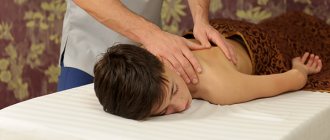Logoneurosis – a speech disorder, which is manifested by repetition of the same words, utterance of individual sounds, conversational pauses and interrupted speech. Logoneurosis according to ICD-10 has code F98.5 - this is stuttering/stammering. Logoneurosis and stuttering are synonymous concepts, but to understand the difference between them, it is worth paying attention to the causes of stuttering. If stuttering is neurotic in nature, then it is logoneurosis. In addition, there is also neurosis-like or organic stuttering associated with physiological reasons. Below we will talk specifically about neurotic stuttering. Logoneurosis prevents a person from living fully, so you need to start fighting it in childhood and as early as possible. The earlier a violation is identified, the easier it is to correct it and the fewer associated problems there are (self-doubt, low self-esteem, anxiety, fear of speaking - logophobia). Before you begin speech correction, you need to identify the causes of logoneurosis. According to statistics, logoneurosis appears in preschool age. Boys are three times more likely to stutter than girls. If logoneurosis is not cured, the person will continue to stutter into adulthood.
Causes of stuttering in teenagers
Mostly, the pathology appears in childhood: at 3–4 years. If stuttering is diagnosed in adolescents or an adult, this means that correction was not carried out at the right time or it was inadequate. But there are also cases when pathology appears for the first time in adolescence, and before that speech is normal.
In cases where pathology first appears in adolescents, this happens for several reasons:
- genetic predisposition, when there are disturbances in the functioning of the nervous system, when exposed to provoking factors they lead to stuttering or other speech disorders;
- neurological pathology;
- the presence of other speech defects, while the violation may be minor and not interfere with the teenager, but causes fear and spasms;
- difficult relationships in family, school, company;
- conflicts, stress;
- excessive stress on a teenager - both physical and psychological: a complex curriculum, tests, tests, exams;
- unfavorable environment - dysfunctional family, lack of attention on the part of parents, their indifference to the child;
- the opposite situation is too high demands made by parents, pressure and expectation from him of excellent studies, good results in all areas. At the same time, parents do not take into account the developmental characteristics of their child, his character and abilities;
- injuries of the central nervous system - at birth or after;
- infectious diseases, intoxications, endocrine disorders that affect the brain, especially if they are severe;
- convulsive reactions.
Whatever the cause, stuttering is not just a speech impediment. In most cases, this is a dysfunction of the nervous system with many consequences. Therefore, eliminating stuttering in adolescents is a complex task, in the solution of which several specialists take part: speech therapist-defectologist, neurologist, psychologist or psychiatrist.
Causes of logoneurosis
Currently, the exact causes of logoneurosis are unknown. Possible reasons include:
- Underdevelopment or defects of the articulatory apparatus;
- When learning conversational speech, the child’s brain was subjected to a heavy load, so a failure occurred, leading to the appearance of a speech defect.
- Imitation. If a child communicates with a relative who stutters, he copies this manner of communication.
- Early development of child speech. The vocal muscles do not have time to cope with a large vocabulary if their formation has not been completed.
- Unhealthy family atmosphere, lack of attention. Children stutter, subconsciously wanting to attract the attention of their loved ones.
- Strictness in education and reprimand (punishment) for pranks.
- Early child language teaching. Due to oversaturation, the children's brain does not have time to absorb information.
- Memorizing huge and complex poems. The speech apparatus cannot withstand heavy loads. If this fact is not taken into account, logoneurosis may develop.
- Retraining a left-handed person to become right-handed, which causes the child a lot of stress.
- Resulting in severe stress or fear.
General recommendations for the treatment of stuttering in adolescents
Parents' actions should begin with consultation with a specialist. The speech therapist will examine the medical history, speech characteristics, and ask about past illnesses, injuries, and possible causes that led to the disorder.
Self-medication on the advice of friends, without an in-person examination by a specialist, is unacceptable. This can make the situation even worse.
After the examination, the speech therapist refers the patient for consultation with specialists:
- a neurologist conducts a study to identify abnormalities in the nervous system. For this, skull radiography, electroencephalography, rheoencephalography, MRI, CT are used;
- the otorhinolaryngologist excludes diseases of the ENT organs that may affect speech;
- psychologist works with personality disorders.
If necessary, other doctors also work with the teenager: an endocrinologist, a psychiatrist.
After a complete diagnosis, the speech therapist selects treatment tactics for stuttering in adolescents. In mild cases, when stuttering occurs sporadically, in moments of emotional stress, it is enough to do the exercises yourself. Difficult situations when the defect is constantly present and interferes with normal life, medicinal treatment methods, massage, physiotherapeutic methods, and even hypnosis are used.
Typically, therapy is long-term: it may take more than one year to cope with the problem. An important condition is continuity of treatment: complete one course, rest a little, and start the next course. Follow all recommendations of the speech therapist. If you don't care about a teenager's speech impediment, he will follow your example and won't try.
Remember: only the joint efforts of the speech therapist, parents and the child himself will help achieve results.
Even after recovery, you should be on your guard: under unfavorable conditions, stuttering in adolescents can recur. Therefore, it is very important to eliminate all risk factors: avoid stress, reduce stress at school, create a favorable atmosphere at home.
Where to go for treatment of logoneurosis?
Throughout the entire existence of the Ember center, our specialists have successfully relieved their clients (adults and children) from logoneurosis. Correction of logoneurosis should be carried out by competent specialists. Contact our center and our specialists will save you or your loved ones from logoneurosis forever. If necessary, classes can be held at home, in an environment that is comfortable and familiar to the client.
Make an initial appointment for the correction of logoneurosis by phone or fill out the application form on the website.
Breathing exercises
When a teenager stutters, a spasm occurs in the muscles involved in articulation. The type of breathing is thoracic, which means superficial. Therefore, eliminating stuttering in adolescents begins with developing deep diaphragmatic breathing.
After classes, the diaphragm develops and the ligaments become more mobile so that the child begins to use breathing correctly in the process of speech formation, and maintain the pace of inhalation and exhalation. Hesitations associated with lack of air disappear, which means that fear goes away and the teenager becomes more relaxed.
There are many breathing exercises techniques, the most effective and popular is the method of A. N. Strelnikova. The technique is based on rhythmic breathing movements overcoming the resistance of the diaphragm.
The technique is as follows: the child takes a sharp breath, while making some movement, using the diaphragm muscles. After a series of breaths, he exhales calmly, then a new series of breaths. And so several repetitions.
As an example, here are a few exercises:
- “Palms” - the teenager stands or sits, arms along the body. During several successive sharp breaths, he should clench his fists rhythmically: and so on 8 times. Then exhale and a new series of breaths;
- “Pump” - legs apart, arms along the body. During inhalation, the child should bend forward, arms hanging down, back rounded. Exit - returns to the starting position;
- “Hug your shoulders” - arms in front of you and bent at the elbows, palms facing down, forearms on top of each other. When inhaling, you need to hug yourself by the shoulders, while your arms form a triangle.
Folk remedies
Folk remedies can be effective in eliminating stuttering in adolescents. But they cannot replace other correction methods: drug therapy, physiotherapy, massage, classes with a speech therapist and psychologist. Therefore, be sure to consult with your doctor before starting treatment. Moreover, some products have contraindications - only a specialist will tell you all the nuances.
The most commonly used means are:
- inside - oregano, lavender flowers, drupes, linden blossom;
- externally (baths) - with rosemary, peony.
Logorhythmics
Treatment of stuttering in adolescents using logorhythmics is aimed at improving speech rhythms and creating smooth, expressive speech. Exercises affect breathing, movement, sensory and speech motor areas. Also, such activities have a positive effect on the emotional and volitional qualities of the patient, making him more active.
During classes, the child makes movements, while rhythmically pronouncing some sounds.
For classes you need music - at different tempos (fast, moderate, accelerated, slow, rapid), which helps the child quickly switch from one type of movement to another. You also need speech material - tongue twisters, rhythmic sentences.
An example program could be like this:
- introductory exercises - walking for the ability to control movements, the ability to walk at different paces;
- chanting to develop speech breathing, coordinating singing with hand movements;
- singing and its coordination with walking - aimed at developing rhythmic hearing, attention, understanding of the character and tempo of music;
- exercises for coordinating melodic speech with movements - the child learns to control his muscles;
- listening to music, exercises to stimulate musical memory;
- game exercises to develop emotionality and stimulate imaginative thinking;
- final exercise of a calm nature.
Or you can pronounce tongue twisters: first short ones (within 2 weeks), gradually choosing more complex and longer ones, with sounds and words that are difficult to pronounce.
4.Treatment
Currently, there are many effective methods for treating stuttering. The primary task is to normalize the attitude towards the disorder and develop a constructive, cooperative position in the patient himself, as well as in his immediate family. It is equally important to examine and, if necessary, adjust the system of intrafamily relations. Various psychotherapeutic techniques of relaxation, distraction, coping (overcoming) fears and mental blocks, teaching autosuggestive techniques, and desensitization are used. Systems of special speech therapy gymnastics, massage, and breathing have been developed. Sometimes drug support is used (tranquilizers, antispasmodics, antidepressants), in other cases it is not indicated and is inappropriate.
If an organic pathology of the central nervous system is detected, a course of adequate neurological treatment or neurosurgical intervention is prescribed (as indicated).
Today, in most cases, it is possible to achieve a complete cure or at least a radical reduction of logoneurotic symptoms. It is very important to seek help at the initial stage, at the first signs of disturbances in rhythm and fluency of speech, when the disorder has not yet acquired the character of stagnant fixation with a lot of secondary psychological consequences.
Massage
Massage eliminates the excitability of speech centers and restores speech regulation. To eliminate stuttering in adolescents, acupressure, probe or segmental massage is used. The specialist influences:
- neck area;
- upper shoulder girdle area;
- facial muscles;
- muscles of the lips, tongue;
- larynx area.
The massage therapist massages the listed areas one by one. First it smoothes them, then taps them (vibration), stretches the skin and muscles. Each area has its own set of movements. Massage of the tongue and lips can be carried out using special probes. They act precisely, stimulating certain points.
The effect can be noticeable after the first procedure: muscles relax, spasm is eliminated, speech becomes smooth, without hesitation or pauses. To consolidate the result, a full course of 10–12 sessions is required. After a short rest, the duration of which is determined individually, a repeat course begins.
Ask a speech therapist to teach you self-massage techniques. By performing massage yourself as an addition to the main course of treatment, you can achieve greater results.
Other therapies
As we have already said, the greatest result will be when using several correction methods. In addition to the above, the treatment package for stuttering in adolescents includes:
- Drug therapy - the doctor selects the drug individually. These can be nootropics, sedatives, vitamin complexes, immunostimulants. It is advisable to use them simultaneously with other treatment methods;
- Classes with a speech therapist help to form correct articulation and breathing;
- Classes with a psychologist (group, individual) instill self-control skills, help get rid of psychological problems, overcome complexes, and adequately treat your problem: do not focus on it, but also do not pretend that everything is normal. This will help a teenager with a stutter feel more confident and equal to his peers. He acquires psychological stability, which of course will help him in later life;
- Physiotherapeutic procedures help relieve muscle spasms and increase blood circulation;
- Acupuncture involves influencing reflexogenic points. The specialist installs special needles on points that are associated with speech function;
Treatment is usually outpatient. In complex cases, for example, neurological pathology, treatment of stuttering in adolescents is carried out in an inpatient setting. When parents have the opportunity, sanatorium treatment is recommended.
Many parents wonder how to quickly get rid of stuttering for a teenager? Experts recommend various relaxation methods: it is different for each person. Meditation, hippotherapy (treatment with horses), art therapy (treatment with drawing) - offer these methods to your child. Perhaps he will like something and develop into his hobby.
Either way, be there for your child. Adolescence is a difficult period for him. With your support it will be easier for him to cope with his problems.
3. Symptoms and diagnosis
As stated above, there are different variations of stuttering that are quite different from each other. In some cases, logoclonia predominates (involuntary repetition of sounds or syllables “at the start” of a phrase or word), in others the tonic component is pronounced - the need to pronounce a word causes overstrain of the facial muscles, tongue, and neck muscles.
Sometimes certain sounds are involuntarily stretched out (as if sung), or the patient cannot pronounce certain phonemes, while other combinations of sounds are verbalized without difficulty. Often, stuttering appears only in certain situations, and in a more comfortable environment for the patient it disappears without a trace.
There are four phases in the progression of logoneurosis: from preschool to “adult”, at the onset of which a stuttering person, as a rule, develops his own techniques for “smoothing out” or “masking” stuttering, gets used to almost automatically replacing words or sounds that are inaccessible to him with more convenient synonyms; in general, comes to terms with the presence of the disorder, more or less adapts and learns to live with it, as well as with a deeply rooted inferiority complex, fear and avoidance of communication, anxiety-depressive syndrome and other mental disorders, sometimes much more severe and pronounced than the primary stuttering.
However, under favorable conditions, correct parental behavior tactics, and a friendly attitude from the microsocial environment, in many cases there is a tendency toward a gradual reduction of stuttering. Complete elimination of speech disorder is observed in 50-80% of cases.
Diagnostics may require the involvement of specialized specialists - first of all, to identify or exclude a pathological organic background (residual consequences of birth trauma, latent neuroinfections, tumors, etc.), as well as to assess the general psychological state, constitutional personality type and other factors, important in terms of future treatment.
About our clinic Chistye Prudy metro station Medintercom page!











